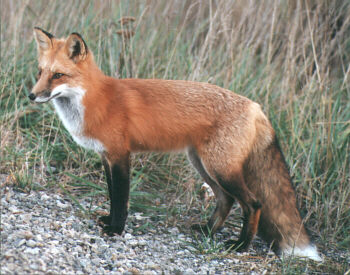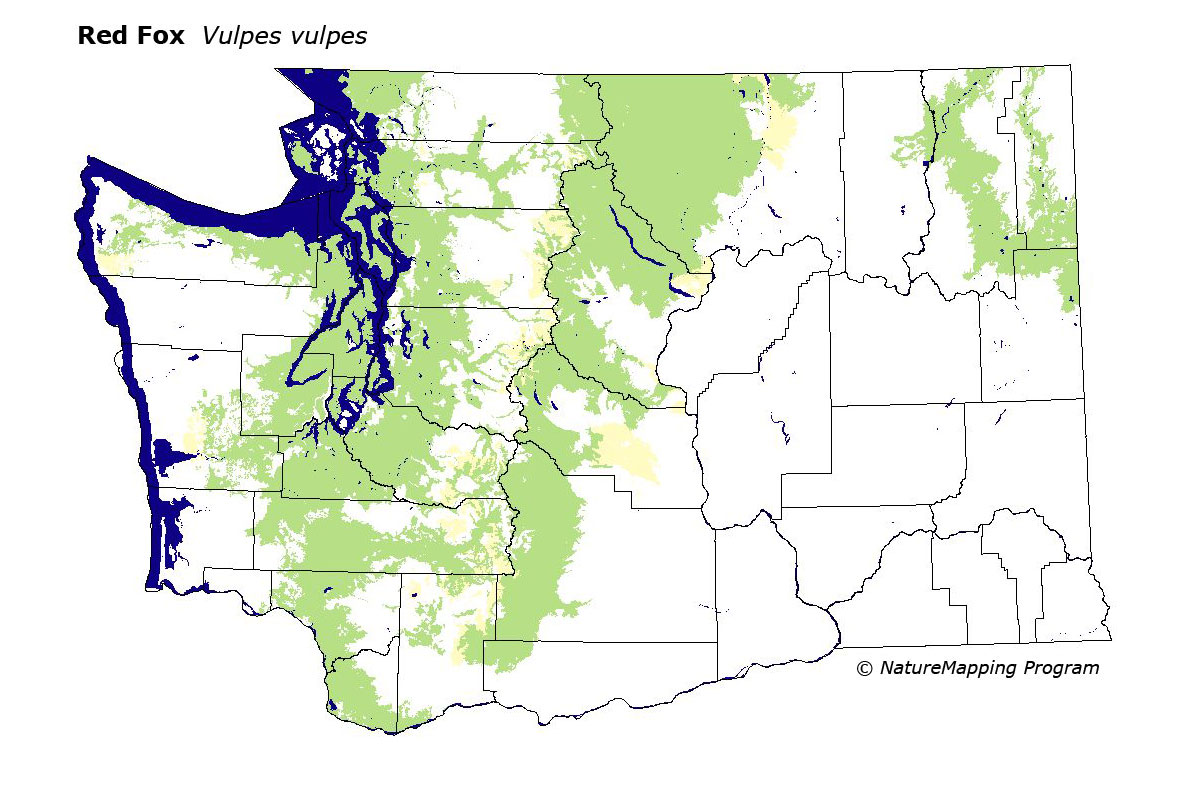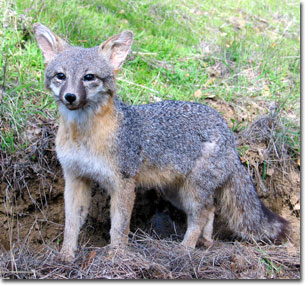
Red Fox
Description: The Red Fox is about the size of a large cat. In fact, although it is a member of the dog family, some of it’s habits are very cat like as well. Appearance wise, it has a reddish coat with white underneath and a big bushy tail with normally a white tip.
Habitat: Foxes live all over North America. They can live in the deepest wilderness or right in your backyard with equal ease.
Diet: Their favorite things are rodents, rabbits and small birds. If they live near people, they are famous for raiding hen houses and stealing chickens.
Reproduction: Breeding occurs between December and February. The female produces one litter of about 4-5 cubs once a year in spring. The naked, blind and helpless cubs are born in a den, or under sheds in urban areas. During the first two weeks following the birth, the female remains witht the litter, suckling her young. At four weeks of age the cubs start to out of the den; they disperse from the area of birth between 6-12 months, and reach sexual maturity at 10 months of age.
Red Fox Breeding Range


Grey Fox
Range and Habitat
The grey fox ranges from southern Canada to Venezuela in South America. Only a few populations exist south of the United States and in Canada. They are found in a large variety of habitats, occuring frequently near cities.
Physical Appearance
The grey fox's name is a misnomer, as this fox is not entirely grey. The grey parts of this fox are a result of the individual hairs being banded with black and white, giving the appearance of grey fur. The top of the head, the back and sides of the animal, as well as its thick, bushy tail, are a grizzled grey color. The underside of the tail, the outside of the ears, most of the underside, and the sides of the neck and chest are orangish-red in color. The most ventral part of the abdomen and chest, the lowest parts of the legs and paws, the throat and lower chest, cheeks and muzzle are white. A thin black stripe runs from the outside corner of each eye to the sides of the head. A thick, dark stripe runs from the inside corner of each eye down the sides of the muzzle to the mouth. The tail has a black tip, and the hairs along the dorsal edge of the back and top of the tail have heavy black tips, creating a dorsal stripe that extends along the back all the way to the tip of the tail.
The grey fox has a thick, long body set on relatively short legs (for a canid). They live in the warmer parts of the world, so they do not have a double coat; instead they have a single layer of coarse fur. Male grey foxes are slightly larger than the females. Their legs are shorter than the red fox. Unlike most Vulpes foxes, the grey has oval-shaped pupils, opposed to the slit-like ones of the red fox. The skull can easily be distinguished from Vulpes foxes by the widely spaced temporal ridges, which form a U-shape on the sides of the skull.
Grey foxes eat small mammals and wild birds, as well as insects, fruit and vegetation. Their diet varies within their range. Some tend to be more insectivorous, some eat more vegetation, and some eat more meat, depending on what is available as prey. They rarely prey on domestic fowl. They are nocturnal, and so tend to hunt at night.
Grey Fox Breeding Range
